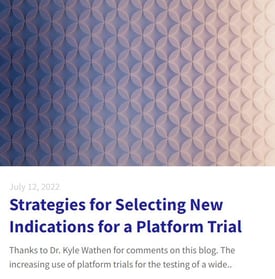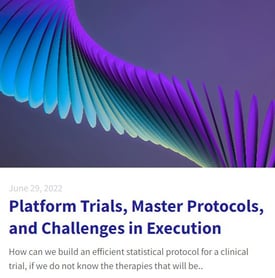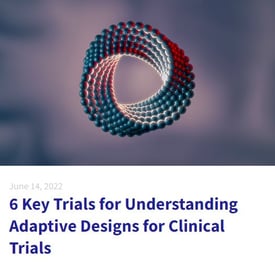7 Ways RWD Is Transforming Clinical Research

To watch this webinar and others from this introductory series, click the link below.
The ability to draw on electronic medical records is foundational to the use of real-world data (RWD). In China, companies like HappyLife Tech (HLT), an affiliated company of Yidu Tech Inc., can build digital ecosystems with 1.3 billion data records and over 300 million patients, thereby opening new horizons for real-world solutions. Such solutions have the potential to improve every stage of the product lifecycle and study journey including feasibility studies, clinical trial design, and market access. They also open new development pathways including those for decentralized trials and AI-driven solutions. According to Dr. Luyan Connie Dai in her recent webinar “Embrace the Era of Digital Clinical Trials in China: Challenges & Opportunities,” there are seven key ways in which RWD is transforming the product journey in China.
1: Trial Design
The optimization of the statistical design of a clinical trial can be guided by RWD. A number of considerations arise including how to optimize uses of historical data, which target populations to choose, and in some cases how to stratify trials.
2: Single-Arm Trials
Single-arm trials are built using RWD as a control arm, and new treatments as comparators thereby expediting clinical trials and reducing their length. RWD can also be used to augment data collected in two-arm trials and multi-arm trials.
3: Evidence for label changes
Sometimes a randomized control trial is unnecessary or infeasible for a label change. RWD can support new indications.
4: Health Economics and Outcomes Research
RWD can be used to measure the economic benefits of therapies as well as offer new directions for continuous monitoring.
5: Feasibility Studies
RWD can be used to forecast site-level enrollment to ensure that milestones are achieved.
6: Artificial Intelligence–Driven Solutions
As more life sciences companies begin to use artificial intelligence, the synergies between AI and RWD have been increasing. According to Dr. Dai, this includes refining patient recruitment strategies to the point where 100 subjects were recruited for a given study within 105 days, with 98 subjects completing their treatment. AI also helped determine acceptability of inclusion/exclusion criteria that enabled the sponsor to update recruitment strategy after the trial had begun.
7: Decentralized Trials
For decentralized clinical trials, RWD can facilitate feasibility analysis, digital screening of patients, digital audits of reporting quality (i.e., checking between electronic data capture and source data to note quality reporting), remote monitoring, and eSource for uploading.
To learn more about emerging trends in RWD, click below to watch the webinar:
Read more about this webinar series:
About the Author of the Blog:

Dr. Esha Senchaudhuri is a research and communications specialist, committed to helping scholars and scientists translate their research findings to public and private sector executives. At Cytel Esha leads content strategy and content production across the company's five business units. She received a doctorate from the London School of Economics in philosophy, and is a former early-career policy fellow of the American Academy of Arts and Sciences. She has taught medical ethics at the Harvard School of Public Health (TH Chan School), and sits on the Steering Committee of the Society for Women in Philosophy's Eastern Division, which is responsible for awarding the Distinguished Woman in Philosophy Award.





